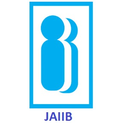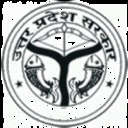In option (a), the preposition 'since' does not require the preposition 'of' to follow it. The preposition 'of' can be removed to make the sentence error-free.
In option (c), an adjective is required to describe the state of 'seeing', so the use of the past participle form (V3) of the verb 'excited' is incorrect and the adjective 'exciting' is to be used.
In option (d), the adverb 'professionally' is incorrectly used to qualify the noun 'chef' instead of an adjective. Nouns can be qualified only by an adjective and instead of the adverb, the adjective form 'professional' is to be used.
Option (b) is a sentence that is grammatically and contextually correct without any errors.
Hence, the correct answer is option (b). Here, 'hides' means the skin of an animal that will be used for making leather, etc.
Note:
A Preposition is a word placed before a noun or a pronoun or a noun equivalent (pronoun, adverb, gerund, infinitive, adverbial clause, or any clause that can be used as the object of the preposition) and shows a relationship in space or time or a logical relationship between two or more people, places, or things in a sentence.
Examples
I. The teacher scolded the child for being late.
II. We're going to a party.
· The words in bold are called prepositions because they normally take position before (pre) a noun/pronoun or a noun equivalent (pronoun, adverb, gerund, infinitive, adverbial clause, or any clause that can be used as the object of the preposition.
· The noun/pronoun which is used with a preposition is called its Object.
Qualifiers: A word or phrase that limits the meaning of another word or phrase or makes it less general. 'Adverbs' and 'adjectives' are qualifiers.
V1 -> Base form/simple form of verb, V2 -> Past form of verb (-ed form or irregular verb), V3 -> Past participle form of verb (-ed, -d, -t, -en, or -n), V4 -> Continuous form of verb / Present participle form of verb (-ing form), V5 -> Third person singular (V1+ -es or -s).
 Study Notes
Study Notes Mock Tests
Mock Tests Previous Year Papers
Previous Year Papers Category
Category

































































































